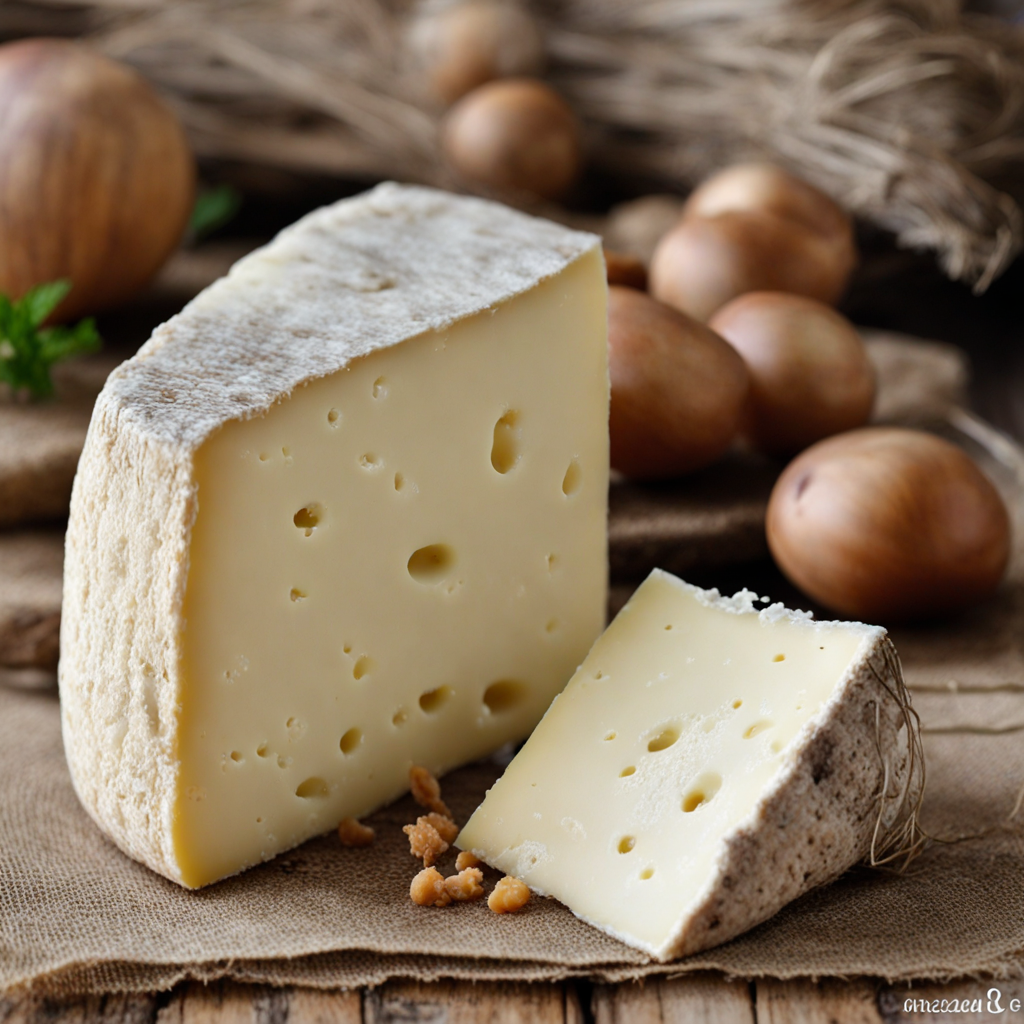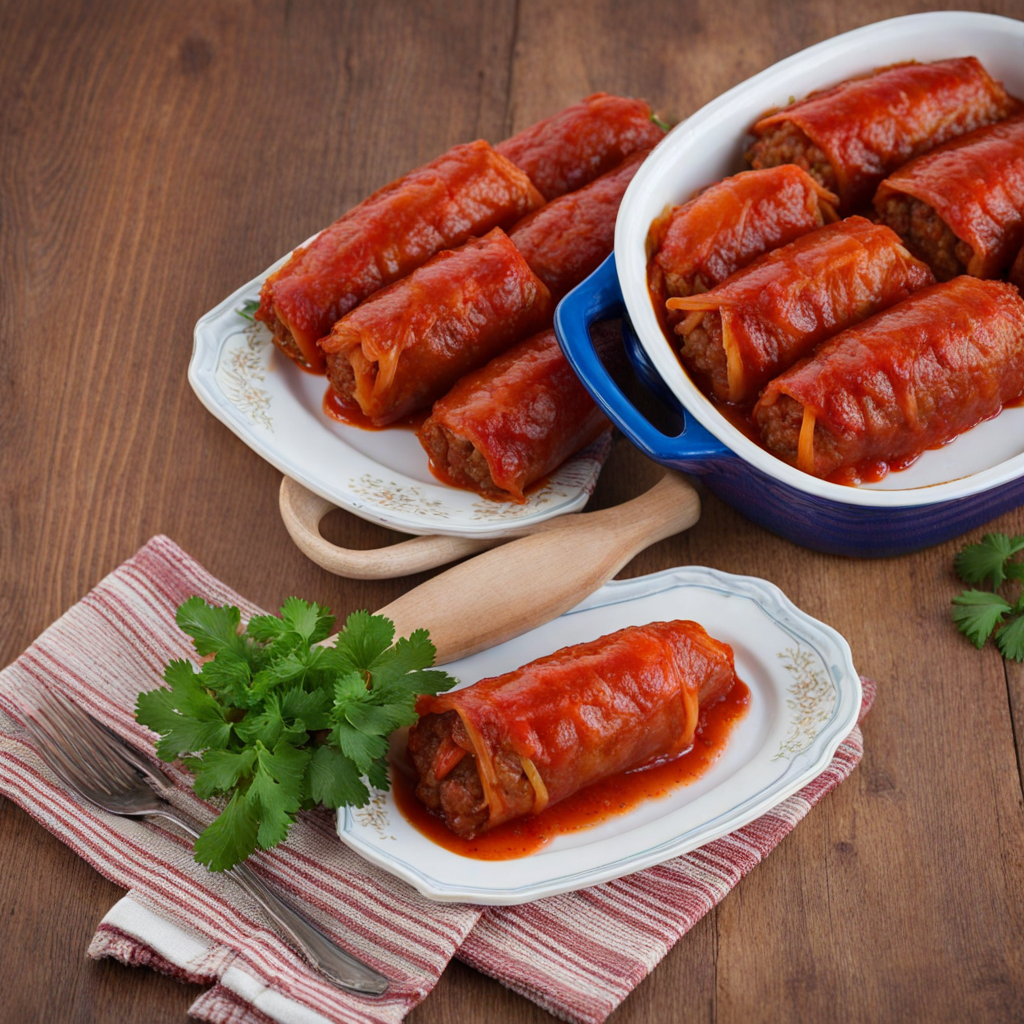Brânză de burduf
Бринзэ де бурдуф, or "Brinza de Burduf," is a traditional Moldovan cheese that exemplifies the rich culinary heritage of the region. This artisanal cheese is recognized for its robust flavor and unique texture, which have made it a staple in Moldovan households and a symbol of the country’s pastoral traditions. The name "Brinza de Burduf" translates to "cheese from a sack," referring to the traditional method of its preparation. The history of Brinza de Burduf is deeply rooted in the pastoral lifestyle of Moldovan shepherds. For centuries, these shepherds have crafted this cheese while tending to their flocks in the Carpathian Mountains and the lush pastures of Moldova. The cheese-making process was often a communal activity, passed down through generations, and it reflects the local customs and knowledge of dairy farming. Traditionally, Brinza de Burduf was made during the summer months when the sheep grazed on the rich, aromatic grasses of the highlands, infusing the cheese with the distinct flavors of the local flora. Brinza de Burduf is primarily made from sheep's milk, although variations can include cow or goat milk. The milk is typically unpasteurized, lending a depth of flavor that is characteristic of artisanal cheeses. The preparation begins with the curdling of milk using rennet or natural souring agents, followed by the pressing of the curds into molds. The cheese is then placed in a
How It Became This Dish
The History of Бринзэ де бурдуф: A Culinary Treasure of Moldova #### Origins Бринзэ де бурдуф, often translated as "sheep's cheese in a sack," is a traditional Moldovan cheese that embodies the rich pastoral heritage of the region. The origins of this cheese can be traced back to the nomadic shepherds of the Carpathian Mountains, who roamed the lush pastures of Moldova, Romania, and Ukraine. These shepherds developed a unique method of cheese-making that utilized the abundant milk from their flocks, particularly sheep, to create a product that was both nutritious and long-lasting. The name "бурдуф" derives from the Romanian word "burduf," which refers to a sheep's stomach or bladder. Historically, after milking, shepherds would store the cheese inside the cleaned stomach or bladder of the sheep, allowing it to age and develop a distinctive flavor. This method was not only practical but also a reflection of the resourcefulness of pastoral communities, who relied on every part of the animal for sustenance. #### Cultural Significance In Moldovan culture, Бринзэ де бурдуф is more than just a food item; it is a symbol of identity and tradition. The cheese is often featured in festive meals and family gatherings, serving as a reminder of the region's agrarian roots. It is typically served with polenta (mămăligă) or alongside fresh vegetables, complementing the simplicity and heartiness of Moldovan cuisine. During traditional celebrations, such as weddings and harvest festivals, Бринзэ де бурдуф plays a central role. It is customary for hosts to present this cheese as a gesture of hospitality, signifying abundance and good fortune. The cheese's unique flavor profile—salty and slightly tangy—pairs well with local wines, making it a staple on the dining tables of Moldovans. Furthermore, Бринзэ де бурдуф is often associated with the pastoral lifestyle and the deep connection Moldovans have with their land. It represents the seasonal rhythms of shepherding, cheese-making, and the communal activities that bring families and communities together. This connection to the land is deeply ingrained in the Moldovan psyche, making Бринзэ де бурдуф a cherished culinary heritage. #### Development Over Time Over the centuries, the methods of producing Бринзэ де бурдуф have evolved, influenced by technological advancements and changing culinary practices. While the traditional method of using a sheep's stomach remains popular, modern producers have also embraced more hygienic and efficient processes. Today, Бринзэ де бурдуф is often made in factories, where pasteurization and controlled aging processes ensure consistency in quality and flavor. Despite these changes, artisanal production remains alive and well in rural areas, where traditional cheese-makers continue to use age-old techniques to craft Бринзэ де бурдуф. These small-scale producers often pride themselves on the quality of their cheese, emphasizing the importance of using organic and locally-sourced ingredients. The resurgence of interest in artisanal foods has led to a revival of traditional practices, as consumers increasingly seek out authentic, locally-made products. In the 21st century, Бринзэ де бурдуф has gained recognition beyond Moldova's borders. The cheese has become a part of the culinary scene in neighboring countries, particularly Romania and Ukraine, where it is celebrated for its unique flavor and versatility. It has also found its way onto international plates, with chefs and food enthusiasts embracing it as a gourmet ingredient. The rise of the global food movement has also prompted a renewed interest in traditional Moldovan cuisine. As chefs seek to explore and showcase regional flavors, Бринзэ де бурдуф has become a focal point in modern culinary creations. It is not uncommon to find this cheese featured in contemporary dishes, from gourmet salads to artisanal pizzas, highlighting its adaptability and appeal. #### Modern Appreciation and Challenges Today, Бринзэ де бурдуф is not only a culinary staple but also a point of pride for Moldovans. Efforts to promote and protect traditional cheese-making practices have been supported by government initiatives and local organizations. These efforts aim to preserve the cultural heritage associated with Бринзэ де бурдуф while ensuring the sustainability of local farming practices. However, the cheese industry in Moldova faces challenges. As globalization continues to impact local food systems, traditional producers must compete with mass-produced cheeses that often lack the depth of flavor and character found in artisanal products. Additionally, economic pressures and urbanization have led to a decline in traditional pastoral practices, raising concerns about the future of Бринзэ де бурдуф and other artisanal foods. To counter these challenges, initiatives promoting local food networks and sustainable agriculture are gaining momentum. Farmers' markets, culinary festivals, and workshops dedicated to traditional cheese-making are becoming increasingly popular, helping to raise awareness about the importance of preserving Moldova's culinary heritage. These efforts not only support local economies but also foster a sense of community and pride in the region's traditional foods. #### Conclusion Бринзэ де бурдуф stands as a testament to Moldova's rich culinary history and cultural significance. From its humble origins among nomadic shepherds to its place on modern dining tables, this cheese encapsulates the essence of Moldovan identity. As the world embraces the importance of local and traditional foods, Бринзэ де бурдуф remains a beloved symbol of heritage, community, and the enduring connection between people and the land. As we look toward the future, the continued appreciation for Бринзэ де бурдуф and similar traditional foods will play a vital role in preserving the cultural tapestry of Moldova. By celebrating and promoting these culinary treasures, we not only honor the past but also ensure that future generations can enjoy and carry forward these rich traditions.
You may like
Discover local flavors from Moldova







